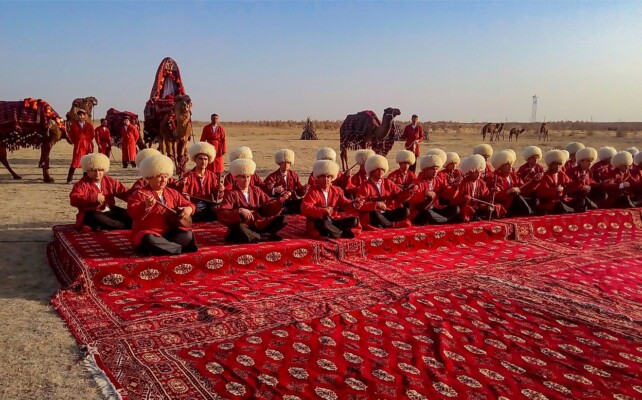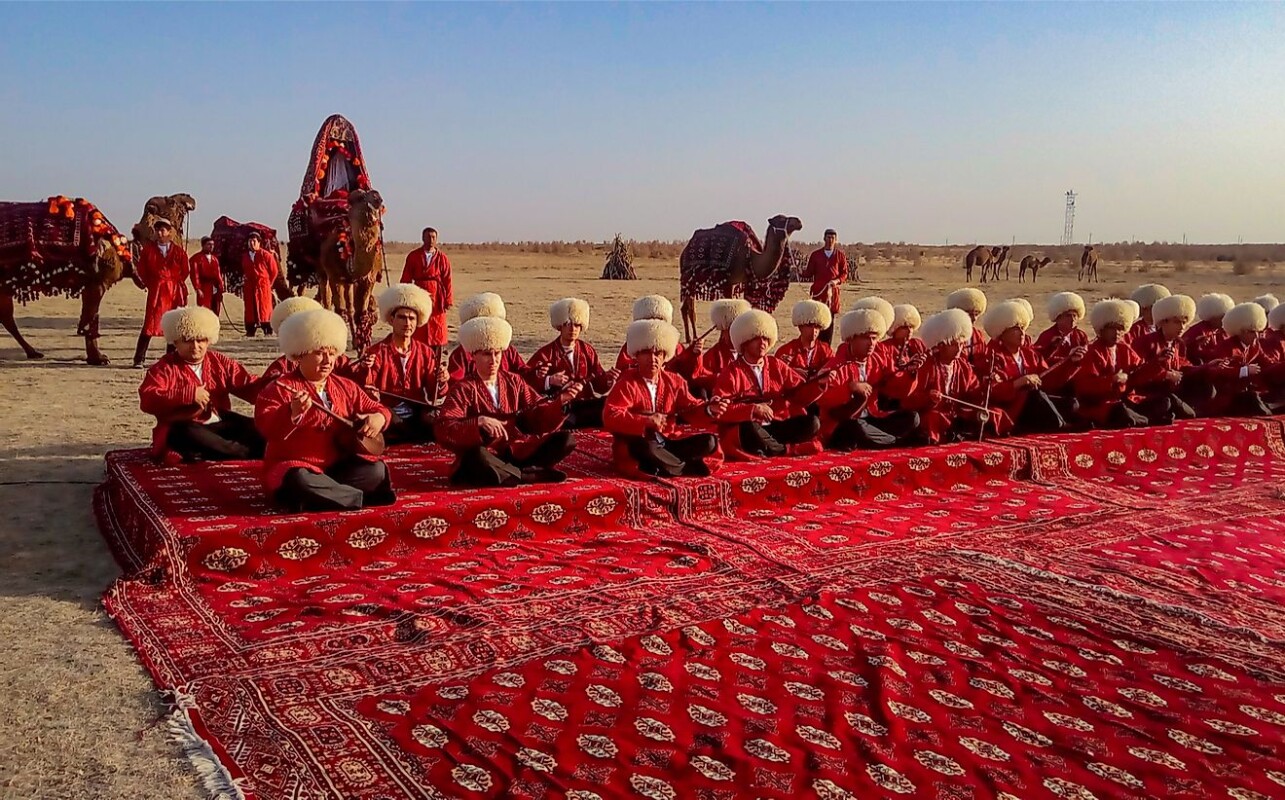Uncategorized
Turkmen carpets, the art of a tribe
Turkmen carpets, the art of a tribe

Turkmenistan is known all around the world for its magnificent handmade carpets which are weaved by Turkmen craftsmen. When speaking about Turkmenistan carpets we mean carpets made in different places, for example, Uzbekistan, Turkmenistan, East Turkistan, Afghanistan, Iran, and Baluchistan. The Turkmen carpets or the trade name ” Russian Bukhara” are carpets of the Turkmen tribe of Central Asia that is republic of Turkmenistan former Soviet Union. It is possible to find Turkmen carpets from Iran, Afghanistan, etc., but the characteristics of these carpets are slightly different from the Turkmen rugs knotted in the Republic of Turkmenistan. The Turkmen carpets include the following qualities; Bashir, Salor, Tekke, Tjaudor, and Yomut carpets, which are all examples of carpet styles that used to be called Bukhara carpets as we mentioned before.
The most well-known Turkmen carpet districts are Ashkabad, Bakharden, Gueok-Tepe, Kizyl-Arvat, and Merv, to mention a few. Also, East Turkestan carpets are sometimes reckoned as Turkmen carpets. Each Turkmen oasis had its unique pattern. But all of them, despite the differences, have a common background, common semantics – all that makes up a Turkmen carpet!
What distinguishes the Turkmen carpets from the republic of Turkmenistan from other places is that the warp is made of wool with repeated patterns with gul motifs and it often has wider borders on the short sides and not on the longer sides. Turkmen carpets from Iran, however, are with a cotton warp. The whole color scale ranging from red and purple to brown is a dominant color in Turkmen carpets. Along with strictly geometrical ornament, Turkmen carpets contain numerous stylized images of animals: rams, camels, horses, birds, etc., which are rarely used. In the Turkmen gul motifs, the ornament was created with a reference to the center of a carpet which symbolized the sun. The gul motif, in Italy, is wrongly known as elephant’s paw which became a common name in the market.
Due to the Turkmen tribal nature, the carpets tend to be small to mid-sized, and unfortunately, it is extremely difficult to find a large carpet made by the Turkmen. The knot density of Turkmen carpets is between 20 and 120 knots per square inch, but it is possible to find higher density in the fine carpets and sometimes the antique ones. The process of dyeing wool in Turkmen carpets is manual. Knotting and dyeing of the Turkmen carpet takes place also with the help of women who make an important contribution in the refinement of the Turkmen carpet or the so-called Russian Bukhara.



